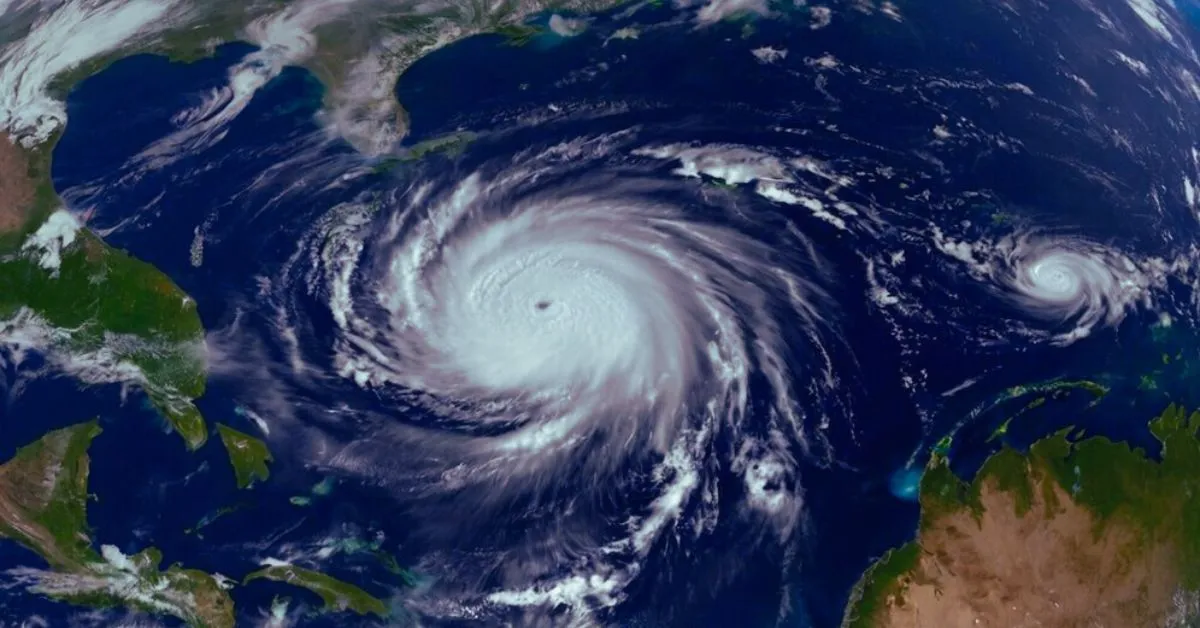Hurricane Helen:What Size Is Hurricane Helen Will It Hit Masvillell
what size is hurricane helen will it hit masvillell . When a storm like Hurricane Helen begins to form, people are left with one burning question: How big is it, and will it hit us? For the residents of Masvillell, this question is more urgent than ever. Understanding the size and potential trajectory of Hurricane Helen is crucial for preparation, survival, and safety. This comprehensive guide will break down everything you need to know about the storm, from its size to its impact on Masvillell.
Hurricane Helen has quickly become a formidable presence in the Atlantic, garnering attention from meteorologists and residents alike. As a major hurricane, it is capable of causing significant damage, and its impact could be far-reaching, extending beyond just coastal areas. With powerful winds, heavy rainfall, and the threat of storm surges, the storm presents a danger to regions that may not typically face hurricanes.
The people of Masvillell are understandably concerned about the storm’s potential to directly impact their community. But understanding the storm’s size, intensity, and projected path is key to making informed decisions. Let’s dive deeper into these aspects to understand just how prepared we need to be.
The Size of Hurricane Helen
Hurricane Helen, like all hurricanes, is categorized based on the strength of its winds and its overall size. A storm’s size is not determined by the diameter of its eye but by the extent of its wind field, which can stretch hundreds of miles from the center of the storm. The winds in the outer bands of the hurricane can still cause severe damage, even if the eye itself does not make landfall.
Wind Field and Radius of Hurricane Helen
The size of Hurricane Helen is considerable, with its wind radius extending up to 150 miles from the storm’s eye. This means that even if the eye of the storm does not make direct landfall on Masvillell, the outer bands of the storm could still cause significant destruction. The wind speeds can be intense in these outer bands, resulting in high winds, heavy rain, and the possibility of flooding far inland.
Storm Surge and Coastal Impact
Along with wind, one of the most destructive elements of a hurricane is the storm surge. This is the rising of sea level due to the pressure drop caused by the hurricane, combined with high winds pushing water toward the shore. Coastal areas in Masvillell, especially those located near the shoreline, may experience significant flooding if Hurricane Helen’s storm surge reaches the area. Even small shifts in the storm’s path could bring this threat closer to the town.
Will Hurricane Helen Hit Masvillell Directly?
One of the most critical questions for the residents of Masvillell is whether Hurricane Helen will hit directly. While hurricanes are notoriously difficult to predict with absolute certainty, meteorologists use various tools and models to track their movements and estimate their paths.
Projected Path of Hurricane Helen
As of now, Hurricane Helen is moving northwestward, but this trajectory could change. While initial models suggested a landfall near Masvillell, hurricanes can shift their paths at any time due to various factors such as ocean currents, wind patterns, and atmospheric pressure. The storm’s path remains uncertain, but the possibility of direct impact remains a concern for Masvillell.
It’s important for Masvillell’s residents to stay updated on the latest forecasts and warnings. Even if the storm does not hit directly, its outer bands could bring heavy rain, high winds, and dangerous conditions that can impact the town significantly.
Factors That Could Change Hurricane Helen’s Path
Hurricanes are influenced by several environmental factors, including the position of high and low-pressure systems, sea surface temperatures, and atmospheric conditions. These factors can cause small deviations in the storm’s track, altering its impact. Because of this unpredictability, it’s crucial for residents to monitor updates from trusted sources, including the National Hurricane Center and local meteorological services.
Hurricane Categories: What Does It Mean for Masvillell?
Understanding the classification of hurricanes helps us understand the potential impact they can have. The Saffir-Simpson Hurricane Wind Scale categorizes hurricanes from 1 to 5, based on their sustained wind speeds. Here’s a breakdown:
- Category : Winds from 74 to 95 mph – Damage is primarily to unanchored mobile homes, trees, and shrubbery.
- Category : Winds from 96 to 110 mph – Extensive damage to trees, power lines, and residential areas.
- Category : Winds from 111 to 129 mph – Devastating damage, with a high risk of injury or death due to airborne debris.
- Category : Winds from 130 to 156 mph – Catastrophic damage, with widespread power outages and structural damage to well-built homes.
- Category : Winds of 157 mph or higher – Total destruction of buildings and widespread areas uninhabitable for weeks or months.
Currently, Hurricane Helen is classified as a Category 3 storm, with sustained winds ranging from 111 mph to 129 mph. This means that if it makes landfall near Masvillell, residents can expect devastating damage to structures, as well as long-lasting power outages. The storm’s power will likely cause extensive damage to homes, especially in low-lying areas or those not well-fortified against such intense winds.
Implications of Hurricane Helen’s Category 3 Status
The intensity of a Category 3 hurricane like Helen means that Masvillell should be prepared for severe damage to buildings, trees, and power lines. Residents should be especially concerned about flying debris, which can cause injury or death if people are not sheltered properly. The threat of flooding from heavy rains and storm surge is also significant, even in areas farther inland from the coast.
Preparations for Masvillell: What You Need to Know
No one can predict with certainty whether Hurricane Helen will strike Masvillell directly, but preparation is key to minimizing damage and protecting lives. The residents of Masvillell should begin taking immediate steps to prepare for the storm, whether it hits directly or not.
Key Steps for Hurricane Preparedness
- Stock up on Supplies: Ensure you have enough food, water, and medical supplies to last for at least 72 hours. Don’t forget to include flashlights, batteries, and personal hygiene items.
- Secure Your Home: Reinforce windows and doors to protect against flying debris. If possible, board up windows and doors with plywood. Remove or secure any outdoor furniture, which could become dangerous projectiles in high winds.
- Prepare for Evacuation: Familiarize yourself with local evacuation routes and shelters. If local authorities issue evacuation orders, leave early to avoid getting caught in dangerous conditions.
- Create an Emergency Plan: Have a family emergency plan in place, including a designated meeting spot and contact information for all family members. Make sure to have a “go-bag” with important documents, medications, and other essential items.
Importance of Staying Informed
Throughout the hurricane’s approach, it’s vital to stay informed. Regularly check for updates from the National Hurricane Center and local weather stations. Many smartphones can receive emergency alerts, so make sure your phone is set up to receive these notifications. It’s also a good idea to have a battery-powered weather radio to receive information during power outages.
The Aftermath: Recovery and Impact on Masvillell
Once Hurricane Helen passes, Masvillell will face the difficult task of recovery. While the storm’s exact impact remains uncertain, residents should prepare for the potential long-term effects. This includes damage to infrastructure, homes, and the local environment.
Infrastructure Damage and Power Outages
Given the size and strength of Hurricane Helen, Masvillell could experience widespread power outages. Power lines may be knocked down by high winds, and debris could block roads, making it difficult for emergency responders to access affected areas. Residents should be prepared for the possibility of days or weeks without power, water, or access to essential services.
Environmental Damage
In addition to the destruction of homes and infrastructure, Hurricane Helen could have a lasting impact on the environment. Coastal areas may experience erosion, and heavy rains could cause flooding that harms local ecosystems. Masvillell’s residents should be mindful of these long-term effects as recovery efforts begin.
Conclusion
While it’s still uncertain whether Hurricane Helen will hit Masvillell directly, the town must be prepared for the worst. The storm’s Category 3 status and large size mean that it poses a significant threat to both coastal and inland areas. The best course of action is to stay informed, take immediate steps to prepare, and be ready to follow evacuation orders if necessary.
Remember that the key to surviving any hurricane is preparation. Whether Hurricane Helen impacts Masvillell directly or not, the town’s residents can minimize damage and loss of life by taking proactive measures to safeguard themselves and their property.





